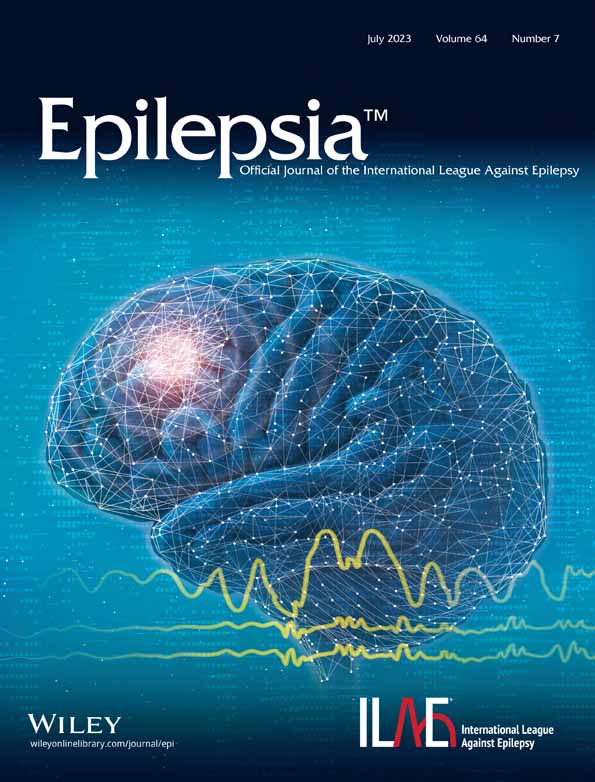Epileptic spasms in CDKL5 deficiency disorder: Delayed treatment and poor response to first-line therapies
Timothy Benke, Chellamani Harini, and Annapurna Poduri contributed equally to this work as senior authors.
Abstract
Objective
We aimed to assess the treatment response of infantile-onset epileptic spasms (ES) in CDKL5 deficiency disorder (CDD) vs other etiologies.
Methods
We evaluated patients with ES from the CDKL5 Centers of Excellence and the National Infantile Spasms Consortium (NISC), with onset from 2 months to 2 years, treated with adrenocorticotropic hormone (ACTH), oral corticosteroids, vigabatrin, and/or the ketogenic diet. We excluded children with tuberous sclerosis complex, trisomy 21, or unknown etiology with normal development because of known differential treatment responses. We compared the two cohorts for time to treatment and ES remission at 14 days and 3 months.
Results
We evaluated 59 individuals with CDD (79% female, median ES onset 6 months) and 232 individuals from the NISC database (46% female, median onset 7 months). In the CDD cohort, seizures prior to ES were common (88%), and hypsarrhythmia and its variants were present at ES onset in 34%. Initial treatment with ACTH, oral corticosteroids, or vigabatrin started within 1 month of ES onset in 27 of 59 (46%) of the CDD cohort and 182 of 232 (78%) of the NISC cohort (p < .0001). Fourteen-day clinical remission of ES was lower for the CDD group (26%, 7/27) than for the NISC cohort (58%, 106/182, p = .0002). Sustained ES remission at 3 months occurred in 1 of 27 (4%) of CDD patients vs 96 of 182 (53%) of the NISC cohort (p < .0001). Comparable results were observed with longer lead time (≥1 month) or prior treatment. Ketogenic diet, used within 3 months of ES onset, resulted in ES remission at 1 month, sustained at 3 months, in at least 2 of 13 (15%) individuals with CDD.
Significance
Compared to the broad group of infants with ES, children with ES in the setting of CDD often experience longer lead time to treatment and respond poorly to standard treatments. Development of alternative treatments for ES in CDD is needed.
CONFLICT OF INTEREST STATEMENT
Heather Olson: Dr. Olson received consulting fees from Takeda Pharmaceuticals and Zogenix regarding clinical trial design, Ovid Therapeutics regarding clinical trial results, and Marinus Pharmaceuticals regarding CDKL5 deficiency disorder, and has done consulting for the FOXG1 Research Foundation. Scott Demarest has consulted for Upsher-Smith, Biomarin, Neurogene, Marinus, Tysha, Zogenix and Ovid Therapeutics. He has funding from the National Institutes of Health (NIH), International foundation for CDKL5 research, project 8P, and Mila's Miracle Foundation. He also serves on the advisory board for the non-profit foundations SLC6A1 Connect, Project 8P, Ring14 USA, and FamilieSCN2A. Elia Pestana-Knight has received consulting fees from Biomarin Pharmaceutical, Zogenix, and Marinus Pharmaceuticals, where she is a member of the Scientific Advisory Board (SAB). Ahsan N. Moosa: No conflict of interest to disclose. Xiaoming Zhang: XZ has no conflict of interest to disclose. José Renán Pérez-Perez: JP has no conflict of interest to disclose. Judy Weisenberg: No conflict of interest to disclose. Eric Marsh is a site PI and previous consultant with Stoke therapeutics, a site PI for Zogenix and Marinus Pharma, a site PI and consultant for Acadia Pharmaceuticals, and a site PI and previous research support for GW Pharmaceuticals. He has research support from the NIH and from Eagles Autism Foundation, Penn Orphan Disease center, RettSyndrome.org, RSRT, and International CDKL5 Research Foundation. Rajsekar Rajaraman: Received honorarium from Zogenix Pharmaceuticals, consultation for UCB Pharmaceuticals, and speaker for Marinus Pharmaceuticals. Bernhard Suter: Consultancy for Taysha and Neurogene; and receives funding from International Rett Syndrome Foundation, International foundation for CDKL5 research, the NIH, the Blue Bird Circle foundation; and Clinical Trials with Acadia, Avexis, GW Pharmaceuticals, Marinus, and RSRT; all remuneration has been made to his department. Akshat Katyayan, Isabel Haviland, Carolyn Daniels, Bo Zhang, Caitlin Greene, Michelle DeLeo: No conflict of interest to disclose. Lindsay Swanson receives research support from the International Foundation for CDKL5 Research. Jamie Love-Nichols: No conflict of interest to disclose. Timothy Benke: Consultancy for Avexis, Ovid, GW Pharmaceuticals, International Rett Syndrome Foundation, Takeda, Taysha, CureGRIN, GRIN Therapeutics, Alcyone, Neurogene, and Marinus; Clinical Trials with Acadia, Ovid, GW Pharmaceuticals, Marinus, and RSRT; all remuneration has been made to his department. Chellamani Harini: No conflict of interest to disclose. Annapurna Poduri is a member of the SAB for TevardBio without personal compensation.




